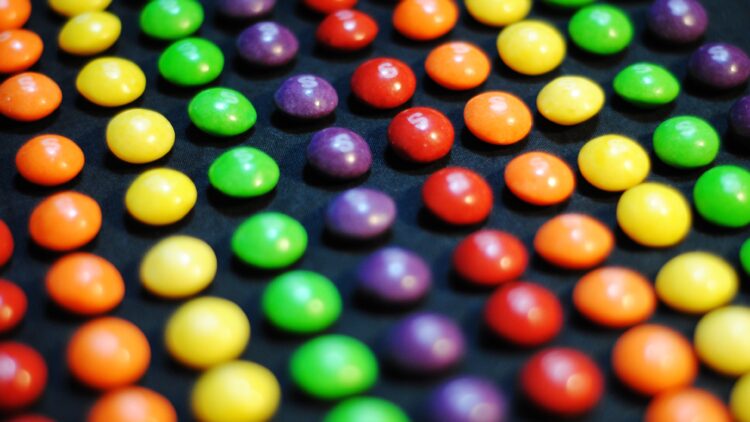When it comes to guilty pleasure sweets , it’s hard to beat Skittles . People have been tasting the Rainbow ever since the iconic candy was launched way back in 1974.
It would seem that all is well in Skittlesland. But according to a new class action lawsuit, Skittles shouldn’t be eaten. At all. By anyone. That’s because the suit alleges that the candy is unfit for human consumption.
The suit was filed this month in California.

Plaintiff Jenile Thames, along with others, claims in the suit that Mars — the manufacturer of Skittles and other types of candy — has failed to disclose to the consumer just what’s inside those brightly-colored candies.
What’s in a bag of Skittles?

We all know that Skittles are mostly sugar and flavoring, but there’s more. The ingredient that forms the basis of the class action suit is titanium dioxide . It sounds scary, but no more so than some of the strange ingredients you’ll see in any processed food product.
Titanium dioxide is a common ingredient.

It’s usually used in sweets like candy, pastries, and cake decorations, but can also be found in toothpaste and cosmetics. The Food and Drug Administration (FDA) limits how much can be used in food products — no more than one percent of the food’s dried weight. Skittles adheres to this requirement.
The ingredient has attracted controversy in the past.

While the FDA permits a small amount of the ingredient in food products, that isn’t the case everywhere. In fact, it was banned altogether as a food additive in the European Union earlier this year over fears that it can cause damage to DNA and increase a person’s risk of developing cancer.
Skittles sees the writing on the wall.

In 2016, Mars announced that they would stop using artificial coloring over the next five years, clarifying that this included the use of titanium dioxide. Now, more than six years later, titanium dioxide can still be found on Skittles’ ingredients list.
The lawsuit hinges on this broken promise.

Because Mars allegedly broke their promise to stop putting titanium dioxide in Skittles, the suit alleges that the company failed to protect consumers by not informing them of the risks associated with consuming titanium dioxide.
Are ingredient lists enough disclosure?

The suit argues that these lists aren’t sufficient, claiming, “Defendant relies on the ingredient list which is provided in minuscule print on the back of the Products, the reading of which is made even more challenging by the lack of contrast in color between the font and packaging.”
Is titanium dioxide really such a big deal?

The link between the chemical and cancer is tenuous at best. A study found that most of it passes through the body, but small amounts are absorbed. If enough is absorbed, it could affect the DNA, which could lead to a higher risk of cancer.
The United Kingdom didn’t follow Europe’s lead in banning titanium dioxide, saying that the conclusions weren’t definite.
It’ll be interesting to see where this suit goes.

Whether or not Mars has to settle this class action, it’s a near certainty that Skittles will remain on store shelves until the end of time.
Let us know what you think of this story in the comments section.

















































